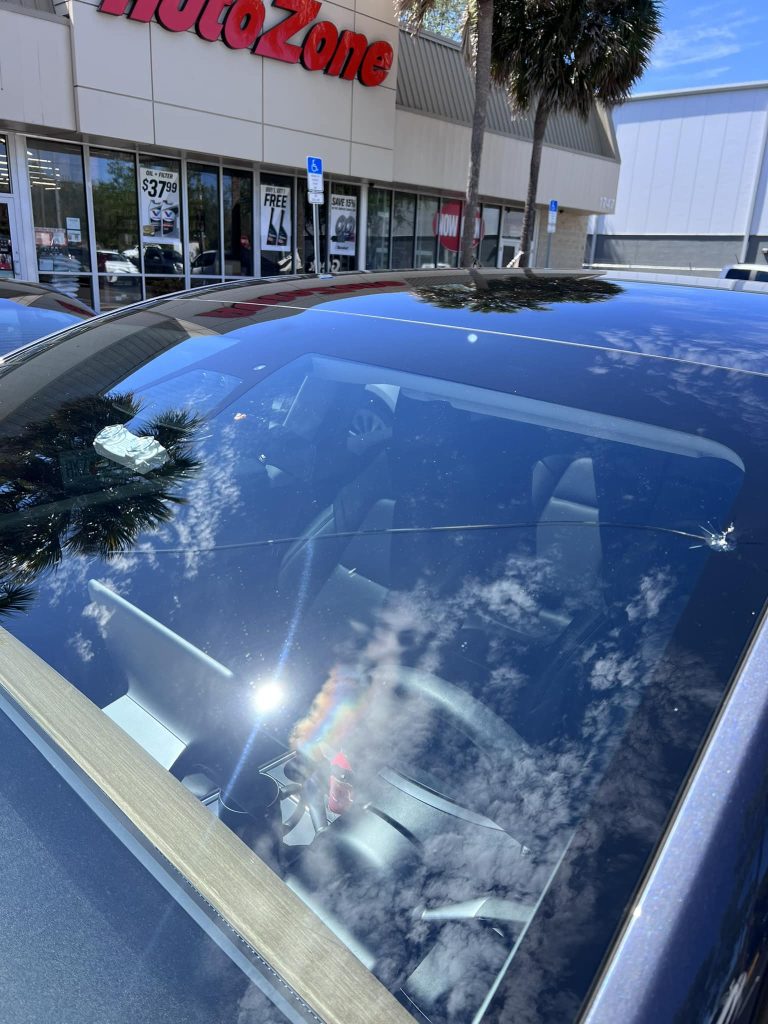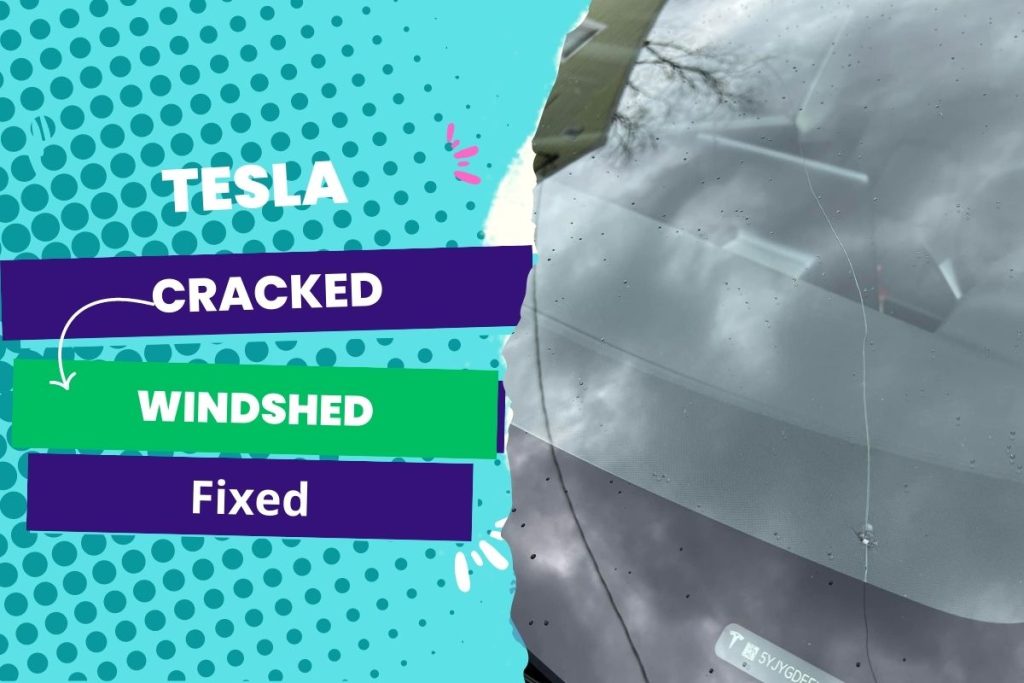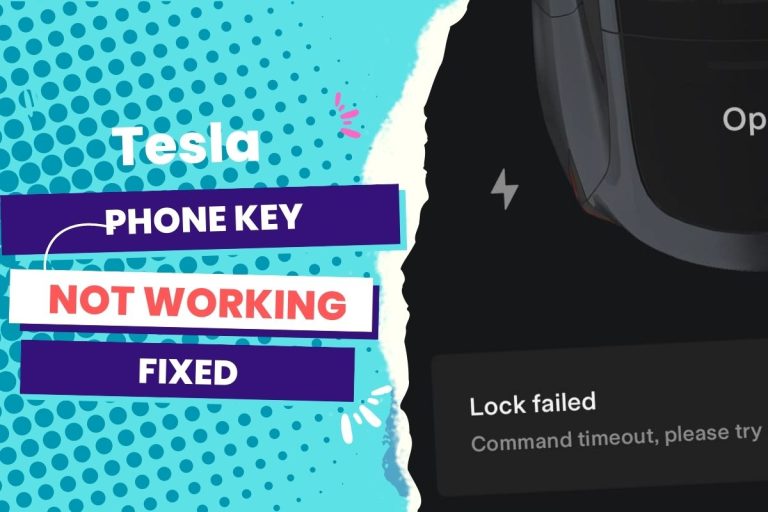Cracked windshields in Tesla vehicles are often caused by road debris and temperature fluctuations, as observed in many reported cases from Tesla owners. In most situations, contacting Tesla service or auto glass repair specialists for repair or replacement is advisable when this happens. However, avoiding debris and using clear film protection can help minimize future damage.
I remember the first time I had to deal with a cracked windshield on my then-first Model Y. I was driving around 60 mph on the highway when I heard a tink on the windshield. Two days later, I observed a crack in the windshield from the top.
The replacement cost me $900 at the local Tesla Service Center since it wasn’t covered under warranty. After this experience, I have been probing into cases of windshield damage, and I realized that many Tesla owners report it.
As you probably already know, Tesla windshields are unique in that they have advanced safety system technology. So it can be disappointing to see that they crack even three months into using them brand new. Worse, the advanced safety system makes repairs and replacements more complex.
After extensive research and my conversation with the technician at the local Tesla Service Center, I’ve gathered enough information to present to you, in this article, everything you should know if you are concerned about a cracked windshield or already have one on your Tesla and are thinking of a way forward.
You Can Skip To Sections Here
What Causes Cracked Windshields On Tesla Cars?

After assessing dozens of reported cases, road debris appeared to be the leading cause of Tesla windshield damage. This includes rocks, gravel, and other objects.
If you notice a cracked windshield, there’s a high chance that these external elements hit the windshield while you were driving, causing cracks or chips.
However, cracked windshields in Tesla cars can also happen when you drive in extremely hot or cold temperatures. In these conditions, the windshield can expand or contract, thus making it crack.
“Cracking your windshield on temperature difference alone isn’t very likely,” says automobile journalist Vlad Mitrache on Autoevolution, “but the probability raises exponentially if there’s a rock chip in the glass.”
Apart from temperature changes, faulty installation or repairs can also be the culprit. It’s not a typical case, but a manufacturing or installation flaw in the windshield can compromise its integrity.
How Serious Is A Cracked Windshield?
A cracked windshield in a Tesla can vary in seriousness depending on the crack’s size, location, and extent. But regardless of these factors, you should take any break in a windshield seriously and address it promptly to ensure your safety and that of the passengers.
For instance, a small crack may seem insignificant, but it can weaken the windshield’s structural integrity and compromise its ability to protect it during an accident.
Also, cracks can impair visibility, which is crucial for safe driving.
In the case of Tesla vehicles, the windshield plays a significant role in supporting the roof structure, as it is part of the overall vehicle design.
So, a cracked windshield in a Tesla should not be ignored or underestimated.
Does Tesla’s Warranty Cover Windshield Cracks?

Tesla’s New Vehicle Limited Warranty, which typically lasts four years or 50,000 miles (whichever comes first), covers defects in materials or workmanship. This warranty protects against manufacturing or assembly defects affecting the vehicle’s performance, including the windshield.
However, warranties typically do not cover damages caused by external factors such as accidents, rocks, or other road debris. Cracks resulting from such incidents usually result from normal wear and tear or external influences rather than manufacturing defects.
While the Tesla warranty does not cover cracked windshields, comprehensive auto insurance policies such as Tesla Insurance cover windshield damage, including cracks, and may provide coverage for repair or replacement.
So if you have a cracked windshield, your insurance policy can cover you for this issue, not the manufacturer’s warranty.
P.S. : The average cost of car insurance for a Tesla is $3,947 per year or $329 per month, but it varies depending on the model, location, and driver’s age.
Does Tesla Have A Special Windshield?
Yes. Tesla’s particular windshield, known as Tesla Glass, incorporates acoustic properties, UV protection, and enhanced durability to provide a quieter, safer, and more comfortable driving experience for Tesla owners.
The acoustic properties reduce noise outside the vehicle, providing a quieter cabin environment.
I like this feature because it helps to create a more comfortable and enjoyable driving experience, especially on highways or in urban areas with high levels of ambient noise.
Advanced UV protection, however, blocks harmful ultraviolet (UV) rays from entering the vehicle.
It’s not a groundbreaking feature, though—many EVs incorporate glasses with UV protection. But the primary benefit of this feature on Tesla’s particular windshield is to protect you from the potential health risks associated with prolonged exposure to UV radiation.
Aside from that, the protection also protects the car’s interior materials, such as the seats and dashboard, from fading or cracking due to sun exposure.
Tesla Glass is built to be durable and resistant to impact since it’s made from specially formulated glass material that offers enhanced strength and durability compared to conventional windshields.
Unfortunately, when you consider the rising reported cases of cracked windshields, you’ll realize that many Tesla owners can argue that the durability feature doesn’t mitigate the risk of cracks or chips from minor impacts.
Are Tesla Windshields shatterproof?
While Tesla windshields are not explicitly marketed as “shatterproof,” they are designed to be highly durable and resistant to shattering. Tesla utilizes unique glass formulation and manufacturing techniques to enhance the strength and safety of their windshields.
Tesla windshields are made from laminated glass, consisting of two layers of glass with a polyvinyl butyral (PVB) interlayer sandwiched in between.
This construction is similar to the windshields used in most modern vehicles.
Laminated glass is known for its ability to hold together when shattered, reducing the risk of flying glass shards and providing a higher level of safety.
While the Tesla windshields are designed to withstand impacts and reduce the likelihood of cracks or chips, extreme forces or severe consequences could result in windshield damage or shattering.
But this is still the case with most automotive windshields.
Is It OK To Repair A Windshield Crack?
Yes. Repairing a windshield crack is considered acceptable and can be a cost-effective solution, depending on the severity and location of the damage. However, there are a few essential factors to consider when deciding whether to repair a windshield crack.
These factors are:
- The size and type of crack
- Location of the crack
- The depth of the trial and the extent of damage
The size and type of crack play a crucial role. Small cracks, typically less than six inches long, and chips can often be effectively repaired. However, larger cracks or those that have spread extensively may require a windshield replacement.
Also, if the crack is in your sight, it may compromise visibility and pose a safety risk. In such cases, I recommend replacing the windshield instead of repairing it.
Ultimately, the depth of the crack and the extent of damage to the glass should factor into your consideration.
Is the crack deep? If yes, it has probably weakened the windshield’s structural integrity.
In such a case, a repair may not be sufficient, and a replacement may be necessary.
After considering these factors and whether a repair is safe, remember that a timely repair is also crucial.
Leaving a crack unattended on your Tesla windshield can spread further due to temperature changes, vibrations, or road conditions.
So if you genuinely dread a complete replacement, prioritize a prompt repair.
Tesla windshield crack defrost
The defrost feature in Tesla vehicles is important in maintaining clear visibility and ensuring driver safety, especially during cold weather conditions. However, it is important to note that the defrost feature does not directly address or repair a cracked windshield. Here’s some information regarding Tesla’s defrost feature and its relationship to windshield cracks:
- The functionality of the Defrost Feature: Tesla vehicles are equipped with a defrost feature that helps clear frost, ice, and condensation from the windshield. When activated, the defrost feature directs warm air onto the windshield, melting ice and improving visibility. This feature is typically controlled through the climate control system of the vehicle.
- Impact on Cracked Windshields: While the defrost feature enhances visibility and improves driving conditions, it does not directly affect repairing or mitigating windshield cracks. The primary purpose of the defrost feature is to clear obstructions on the windshield’s surface, such as frost or condensation, to provide a clear line of sight for the driver.
- Addressing Cracked Windshields: If your Tesla windshield has a crack, it is important to address it promptly to ensure safety and prevent further damage. Cracked windshields may compromise the structural integrity of the glass and in some cases, impair the driver’s visibility.
To resolve a cracked windshield, it is recommended to contact an authorized Tesla Service Center. They have trained technicians who specialize in Tesla vehicles and are equipped to assess the damage and determine the appropriate course of action, which may involve repair or replacement.
- Preventive Measures: While the defrost feature cannot directly fix a cracked windshield, it is still essential to utilize it during colder weather to prevent the formation of frost or ice on the windshield. This helps maintain optimal visibility and ensures safe driving conditions.
To minimize the risk of windshield cracks, it is also advisable to avoid sudden temperature changes. Drastic changes in temperature, such as exposing a cold windshield to hot air or pouring hot water on an icy windshield, can potentially worsen existing cracks or cause new ones to form.




